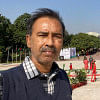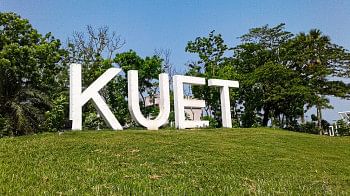Safety net budget to cross Tk1 lakh crore for first time

The budgetary allocation meant for the poor and vulnerable is set to go past Tk 1 lakh crore mark for the first time as the government sets aside additional funds to support the needy during the coronavirus-induced income collapse.
The government may earmark Tk 103,600 crore in the next fiscal year to meet its growing expenditure for social protection and safety net programmes, which is up 8.4 per cent from the revised allocation of Tk 95,574 crore in the current fiscal year, according to an official of the finance ministry.
The higher allocation came despite concerns raised by experts and a government-sponsored study that the real poor and vulnerable usually do not benefit from a large portion of social protection allocation.
The budget for food assistance programmes such as vulnerable group development (VGD), the vulnerable group feeding (VGF), and test relief (TR) could go up to Tk 19,000 crore in FY22 from Tk 17,981 crore in FY21, an increase of 5.66 per cent.
The next fiscal's allocation for stipend may stand at Tk 5,000 crore, up by Tk 10 crore up from FY21.
The fund for the allowance programmes for the elderly and widows would see the highest hike by 42.97 per cent to Tk 14,600 crore against the current fiscal's allocation of Tk 10,212 crore.
The allowance programmes covered 112 upazilas in FY21, and it would be expanded to 150 upazilas in FY22 to add 11 lakh new beneficiaries. For this, the government will have to bear an additional expense of around Tk 1,000 crore.
The allotment for other social protection programmes may go up to Tk 65,000 crore, up 41.47 per cent year-on-year.
The allocations will be finalised in a meeting between the finance ministry and other ministries after Eid as the latter demanded additional funds to feed the poor throughout the pandemic.
The economic shock induced by the pandemic has pushed 2.45 crore people, 14.75 per cent of the country's population, into poverty in one year, according to a new survey of the Power and Participation Research Centre and the Brac Institute of Governance and Development.
A large share of the social protection allocation was set aside for the payment of pension for retired government employees and their families and for paying interests against savings certificates.
Tk 23,000 crore was allocated for the payment of pension, which accounted for more than 24 per cent of the total allocation in FY21. Tk 6,625 crore, or 7 per cent, was set aside to provide interest support to savers.
But the poor and vulnerable can't afford savings certificates. So, it is the middle- and higher-income groups that make the most of the taxpayer-backed tools.
In June last year, a government-commissioned research found that a bulk of the safety net benefits ended up in the non-deserving non-poor groups.
The share of comfortable non-poor is about 30 per cent when it comes to allowance programmes, 32 per cent in food-supported programmes, 44 per cent in maternity allowance, 51 per cent in stipend schemes, and 33 per cent in other programmes in rural areas, the study said.
"Even when it comes to social protection, the extreme poor group constitutes a minority," said the General Economics Division report, prepared by the Bangladesh Institute of Development Studies (BIDS).
In the rural areas, the share of the poor among the total beneficiaries of stipend schemes is 9 per cent. It is 26 per cent in allowance programmes, 24 per cent in food-assisted programmes, 25 per cent in maternity allowance, and 24 per cent in other programmes.
A quarter of the social protection beneficiaries are from vulnerable non-poor households. This is, of course, leakage in the narrow sense of the term but may be viewed as permissive leakage in times of severe shocks, the report stated.
After all, in times of the pandemic shock, the vulnerable non-poor households also risk slipping into poverty and hence merit social protection support, it said.
An official of the finance ministry said the leakage had been reduced to a great extent since it prepared a database.
Zahid Hussain, a former lead economist at the World Bank's Dhaka office, said the government uses an expansive definition of social protection encompassing core social assistance, social insurance, labour market interventions, livelihood programmes, child protection, primary health services, primary and secondary stipends and credit support, pensions to retired government employees, allowances to freedom fighters, and lately interest on national saving certificates.
Excluded the non-core programmes, transfers to households and individuals aimed at addressing poverty and vulnerability in the current year budget is equivalent to 0.9 per cent of GDP across 40 programmes, he said.
"These have resulted in an unenviable trade-off between coverage comprehensiveness and adequacy of benefits."
He said patronage politics had emaciated the new registration undertaken by the expanded open market sales, the new cash support, and the distribution of the augmented VGF cards.
BIDS Director-General Binayak Sen, one of the authors of the report, said the study showed that a large portion of the safety net programmes went to the non-poor.
"This leakage can't be solved through the ongoing digital payments system only since many non-deserving people are getting the benefit," said the economist, adding that the real poor needed to be identified properly.
He emphasised using the national household database of the Bangladesh Bureau of Statistics to eliminate the leakage.
The database is now lying at the disaster management and relief ministry, he said.
An official of the ministry said it had been preparing software based on the national household database, but the work came to a halt because of the pandemic as the foreign consultant had not arrived to complete the task.


 For all latest news, follow The Daily Star's Google News channel.
For all latest news, follow The Daily Star's Google News channel. 



Comments